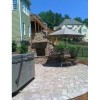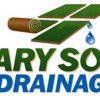A sump pump is commonly used in low lying areas where homes are built below the water table and when basements and crawl spaces accumulate large amounts of water every time it rains. When installed properly, the sump pump system can protect your home from flooding and from moisture that has accumulated over time. The sump pump is placed in the lowest area under the home and is used to pump water outside of the foundation walls or into the home's existing drainage system. The sump pump works in conjunction with a sump pit, and often requires french drain systems directing water to the drainage basin.
Insulation plays a critical role in optimizing the energy performance of your home. The fundamentals of building science are developing new products allowing insulation to play an increasingly important role in whole-house system design. A comprehensive insulation consultation takes into consideration, cost, efficiency, application techniques, and environmental impact. Thermal energy travels from hot to cold, so we lose heat from inside to outside in cold months and lose our cool in the summer as heat tries to move indoors.
Fully encapsulating a crawl space-by both sealing and insulating-is a fully efficient measure in addressing crawl space problems. It makes sense to maintain and improve the lower level area in order to maximize healthy living conditions and home resale value. Crawl space encapsulation involves sealing all outside vents, installing a high-performance vapor retarder on all exposed wall and floor surfaces at or below grade, insulating the walls and rim joist, and conditioning the air. In addition to dramatically increasing indoor air quality and protecting the structure of your home, several research studies from Advanced Energy indicate that crawl space encapsulation can actually lower energy usage.
French Drains should always be installed around foundations. French drain installation is one of the easiest things you can do to prevent excess water from entering your home's basement or crawl space. A French drain is basically a network of crushed stone and plastic piping that encircles the home or home addition and channels that direct water away from the foundation. Flooding problems are usually associated with a sloping ground pooling water against your foundation walls. If your property is built on a slope with your neighbors' house occupying a lot higher up the slope, heavy rainfall can precipitate an accumulation of groundwater rushing down from their property and onto your own.
Your home is a complex system of interdependent parts. If your crawl space shows signs of rot, mold or structural damage, these problems will extend to other parts of the home. A dry crawl space is the starting point of a healthy home. The walls enclosing your crawl space constitute your home's foundation, the very base on which your house stands. Prolonged wet, damp conditions can compromise the foundation walls and cause structural damage, making your house unsafe for your family. Home inspection problems could also result.
Attic ventilation may be one of the places often ignored in your home. When it comes to the ventilation of a home, not many people are not aware that the attic is ventilated too. Attic ventilation helps to cool your attic in the summer and to remove excess water vapor in winter. Proper ventialtion will help remove the heat build-up in your attic and bring your attic's temperature down closer to the ambient outside temperature. The reduced temperature in your attic will also assist your air conditioner by keeping the ductwork and the air inside cooler.
Similar Businesses







